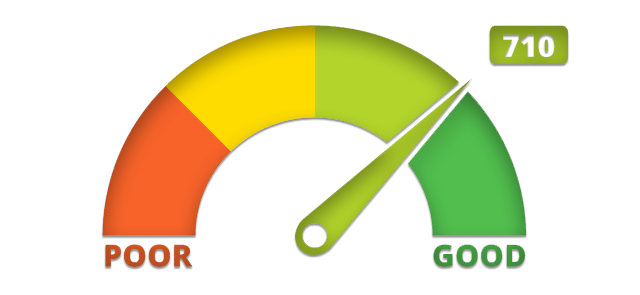
If you're considering establishing a bank account in Panama, here are a few things to consider. These include learning the rules, opening an accounts in the provinces, as well as avoiding conflicts with Panama's Bank of Panama. It can be difficult to get an account in Panama. These tips will help. Keep reading to learn more! Be aware that there are many Panama provinces that have their own banks, which may not be affiliated with the Panama bank.
Information about opening bank accounts in Panama
It is easy to open a Panama Bank Account. You will first need a cedula. This form is very similar in appearance to your American social security cards and will provide you with an ID number. This document is valid only if you are a Panamanian citizen. If you don't have a cedula, you can get an e-cedula, which stands for "extranjero."
Next, you'll need to present some documents. An original copy of your current passport, a reference of an immigration lawyer, and proof of income. These documents can include the pension documents from your visa and your last two tax returns. These documents can differ from one bank to the next, so be sure to verify before you apply. After you've received all necessary documents, you must wait for your account's approval. This can take several hours depending on what bank or branch you use.
Opening a bank accounts in the Provinces
It can be difficult to open a bank account in Panama. However, there are steps you can take that will make the process easier. First, remember that Panama has two state-owned banks, which can only do business within the country. Second, the banks are regulated by the Banking Supervisory Authority, also known as the Superintendencia de Bancos. You can open an account by visiting the bank's local offices. Banks are generally open Monday through Friday between 08:30 and 17:00. Some are closed for lunch. Saturdays are also generally open.

Panama's provinces are structured in a similar way to Canadian provinces and U.S. states. Each province is split into smaller areas called district. The larger towns are situated around districts, while the smaller ones are called corregimientos. The original Panama Province is divided into Los Santos Oeste and Panama Oeste. The Panama Canal seperates the Panama Provinces.
FAQ
What are the different types of investments?
There are four types of investments: equity, cash, real estate and debt.
It is a contractual obligation to repay the money later. It is usually used as a way to finance large projects such as building houses, factories, etc. Equity is when you buy shares in a company. Real Estate is where you own land or buildings. Cash is what you have now.
You become part of the business when you invest in stock, bonds, mutual funds or other securities. You are a part of the profits as well as the losses.
Should I diversify?
Many people believe diversification will be key to investment success.
Many financial advisors will recommend that you spread your risk across various asset classes to ensure that no one security is too weak.
This strategy isn't always the best. In fact, it's quite possible to lose more money by spreading your bets around.
Imagine you have $10,000 invested, for example, in stocks, commodities, and bonds.
Consider a market plunge and each asset loses half its value.
At this point, you still have $3,500 left in total. But if you had kept everything in one place, you would only have $1,750 left.
In reality, you can lose twice as much money if you put all your eggs in one basket.
It is important to keep things simple. Don't take more risks than your body can handle.
What are some investments that a beginner should invest in?
Beginner investors should start by investing in themselves. They must learn how to properly manage their money. Learn how you can save for retirement. Budgeting is easy. Learn how to research stocks. Learn how to read financial statements. How to avoid frauds Learn how to make wise decisions. Learn how diversifying is possible. Learn how to guard against inflation. Learn how to live within your means. How to make wise investments. This will teach you how to have fun and make money while doing it. You will be amazed at the results you can achieve if you take control your finances.
Statistics
- Most banks offer CDs at a return of less than 2% per year, which is not even enough to keep up with inflation. (ruleoneinvesting.com)
- They charge a small fee for portfolio management, generally around 0.25% of your account balance. (nerdwallet.com)
- As a general rule of thumb, you want to aim to invest a total of 10% to 15% of your income each year for retirement — your employer match counts toward that goal. (nerdwallet.com)
- According to the Federal Reserve of St. Louis, only about half of millennials (those born from 1981-1996) are invested in the stock market. (schwab.com)
External Links
How To
How to Invest with Bonds
Bonds are a great way to save money and grow your wealth. When deciding whether to invest in bonds, there are many things you need to consider.
In general, you should invest in bonds if you want to achieve financial security in retirement. Bonds may offer higher rates than stocks for their return. If you're looking to earn interest at a fixed rate, bonds may be a better choice than CDs or savings accounts.
If you have the money, it might be worth looking into bonds with longer maturities. This is the time period before the bond matures. Longer maturity periods mean lower monthly payments, but they also allow investors to earn more interest overall.
Bonds come in three types: Treasury bills, corporate, and municipal bonds. Treasuries bills, short-term instruments issued in the United States by the government, are short-term instruments. They are low-interest and mature in a matter of months, usually within one year. Companies such as General Motors and Exxon Mobil Corporation are the most common issuers of corporate bonds. These securities usually yield higher yields then Treasury bills. Municipal bonds are issued from states, cities, counties and school districts. They typically have slightly higher yields compared to corporate bonds.
When choosing among these options, look for bonds with credit ratings that indicate how likely they are to default. Bonds with high ratings are more secure than bonds with lower ratings. You can avoid losing your money during market fluctuations by diversifying your portfolio to multiple asset classes. This will protect you from losing your investment.